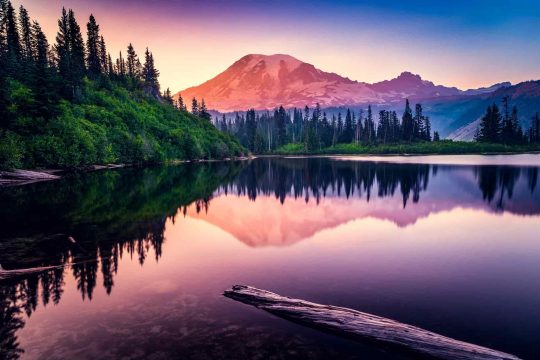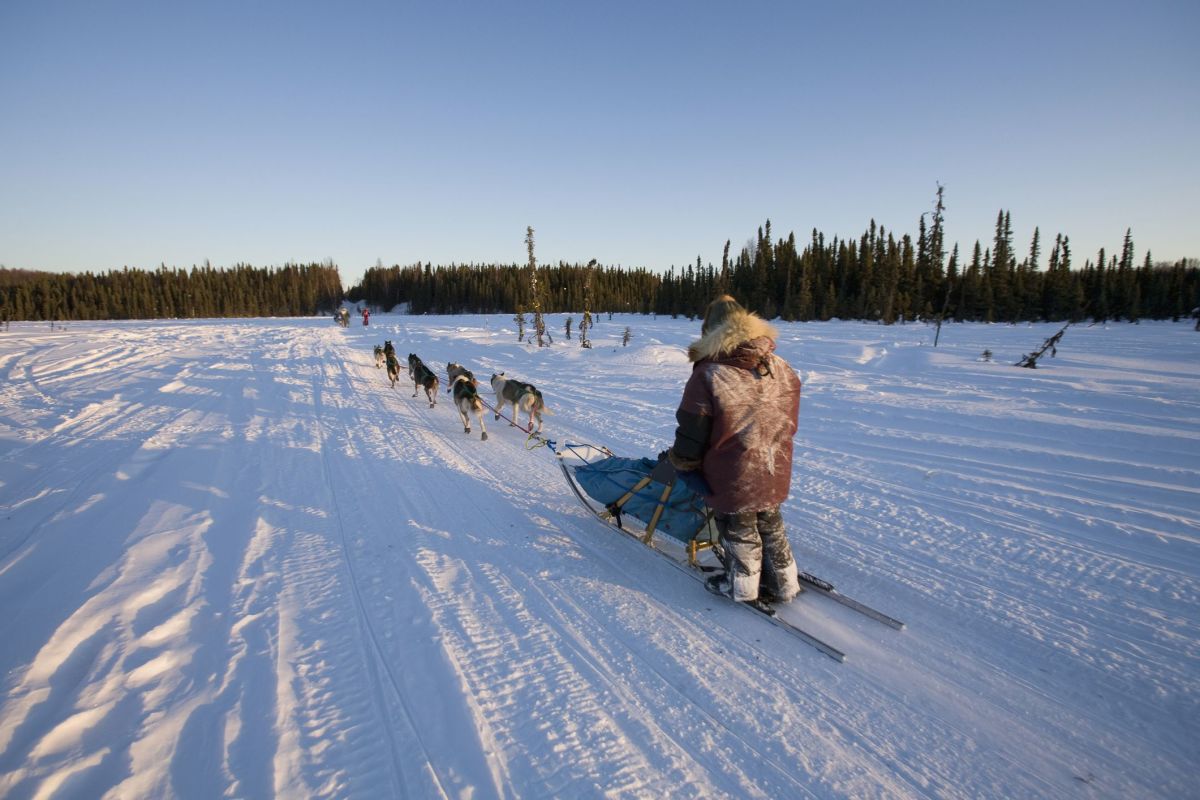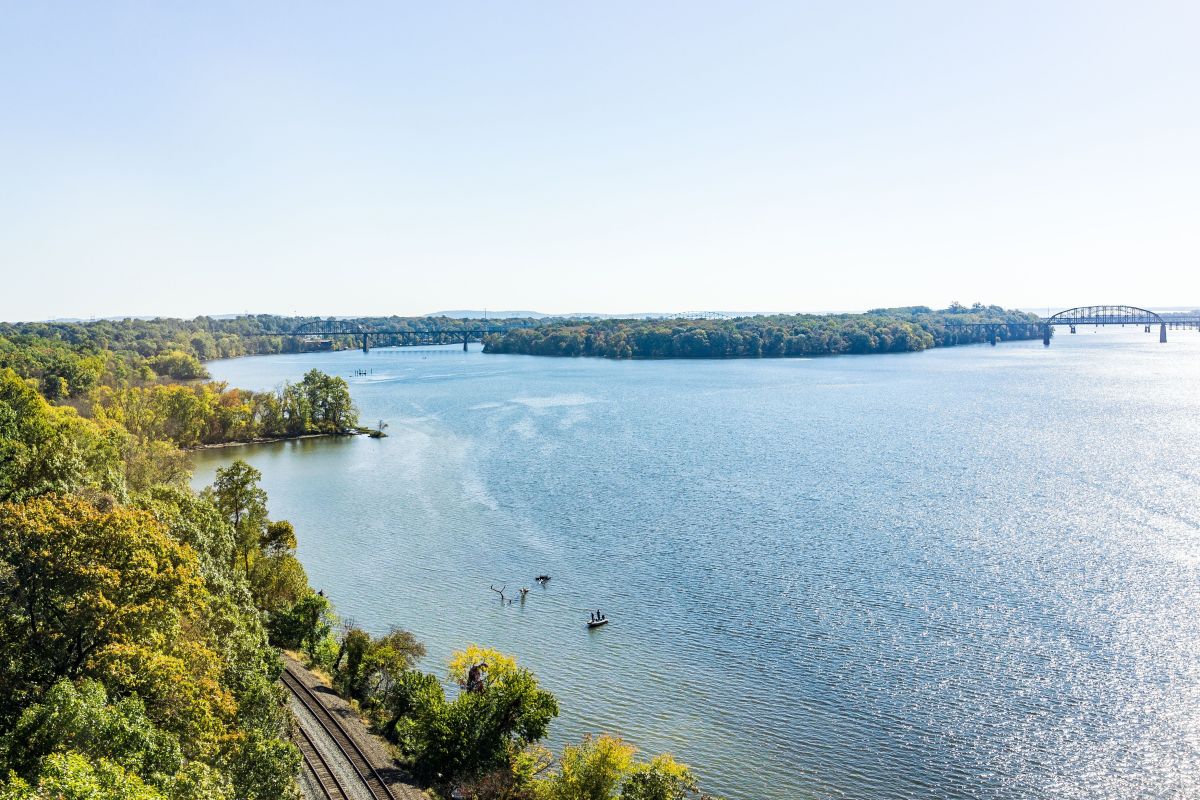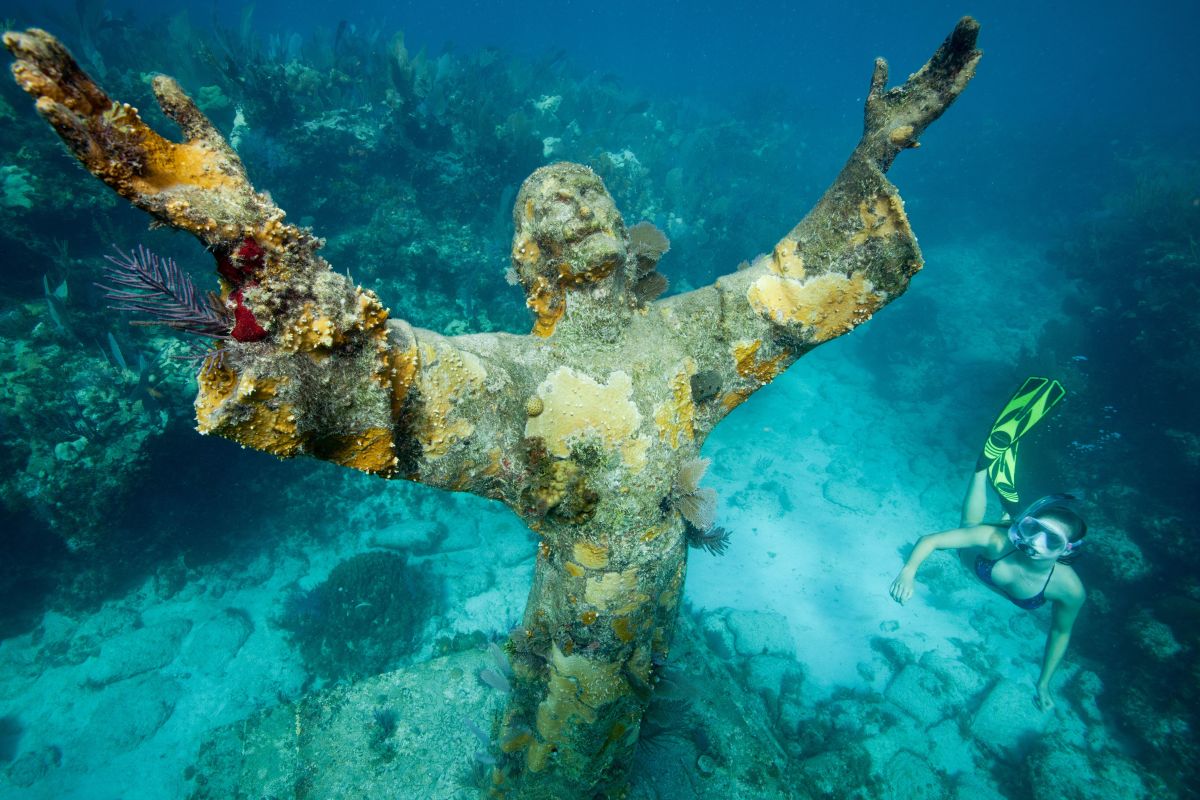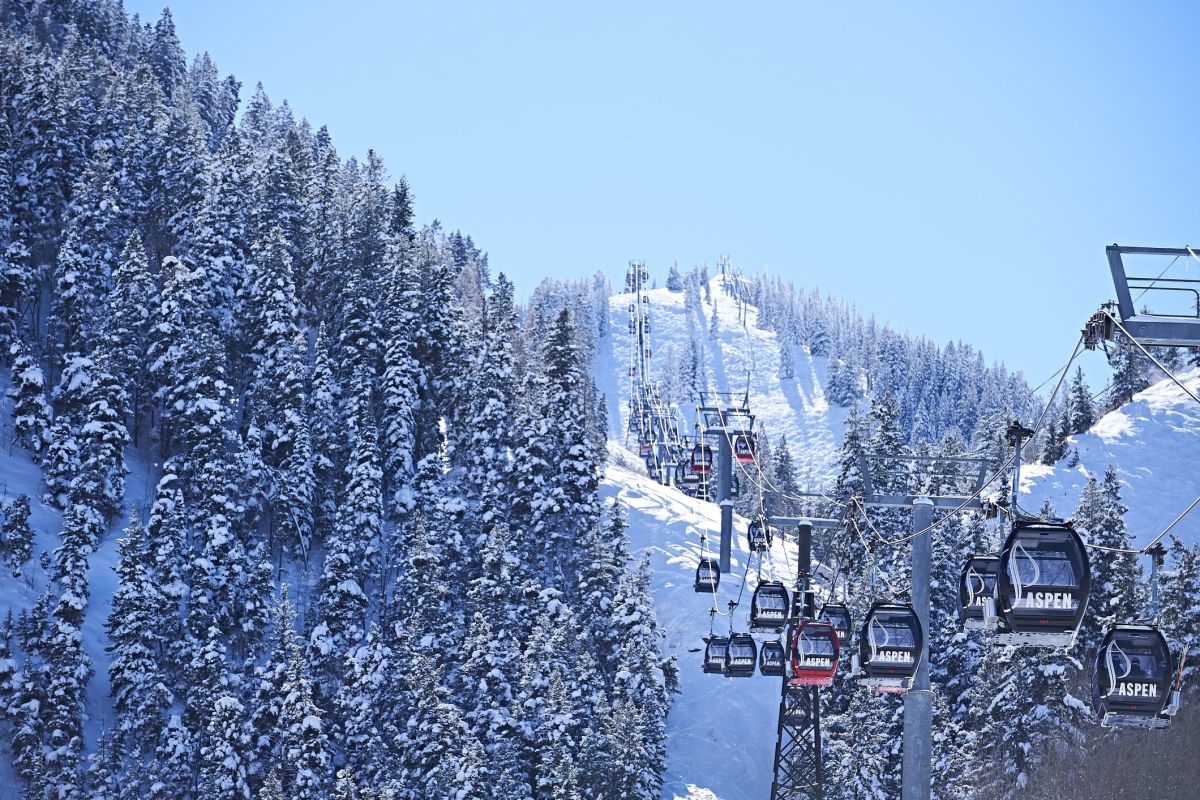15 Epic Outdoor Adventures to Enjoy Across America
2019-03-19Plan an unforgettable trip in your own backyard or on the opposite coast.
The U.S. offers plenty of exciting outdoor pursuits for travelers to enjoy.
From jagged mountains and tropical islands to sandy beaches and massive lakes, the U.S. is home to some spectacular natural wonders. So it’s no surprise that travelers love to take advantage of these beautiful backdrops and plan vacations around various outdoor sports, such as skiing, surfing and mountain biking. Spring offers prime conditions for an array of adventures, including scuba diving and rock climbing, making now the perfect time to plan a stateside adventure. Read on to discover 15 unforgettable itineraries that everyone from city slickers to Eagle Scouts can enjoy. (Getty Images)
Go river rafting in Idaho
Idaho offers rapids suited for every skill level, and visitors are sure to see breathtaking scenery along the way, particularly on the Salmon and Snake rivers. Most local rafting trips take place during the summer and span five days, navigating through canyons, wildlife corridors and untouched wilderness. Plan on hiring an experienced river guide through an all-inclusive company like Idaho River Adventures or Mountain River Outfitters, and expect to spend anywhere from $1,000 to $2,500 per person, depending on the trip duration, river, distance traveled and amenities highlighted in your specific itinerary. Most guide companies and rivers can be reached easily from Boise. (Getty Images)
Soar above Albuquerque, New Mexico, in a hot air balloon
America’s Southwest is known for its year-round balloon festivals, but none are larger than the Albuquerque International Balloon Fiesta in early October. If you’re not able to time your trip with the balloon fiesta, you can still enjoy a hot air balloon ride over New Mexico’s largest city. No matter what time of year you visit, you’ll likely love floating high above the region’s peaceful plains, storied villages and breathtaking canyons and forests. Many companies, including Rainbow Ryders and World Balloon, offer tours of the area at sunrise for between $100 and $200 per person. Rides typically last about an hour (though the whole experience generally takes three to four hours) and end with a celebratory toast. (Getty Images)
Catch a wave on Oahu
Surfing is rooted in Polynesian culture, and one of the most historical and pleasant places to try the sport is on the island of Oahu. From the gentle rollers of Waikiki Beach to the big barrels of the North Shore, there’s a wave for every surfer. The best time to visit is between mid-November and early February, when professionals and surfing tourists flock to the island for the biggest waves of the year. Shops and huts selling rental boards and offering classes line the beaches on the south side of the island (the ideal spot for beginners). A lesson can cost you roughly $75 to $200, depending on the size of your group and your surfing ability. (Getty Images)
Summit Mount Katahdin in northern Maine
The crown jewel of Baxter State Park, Mount Katahdin is the pinnacle of New England hiking. It’s the northern terminus of the world-famous Appalachian Trail, and it provides stunning vistas at its summit. Conquering the highest mountain in Maine – which sits about 180 miles northwest of Acadia National Park – should be on the bucket list of any hiker, but it does require some stamina: The hike takes eight to 12 hours to complete and boasts sheer drops and strenuous switchbacks at every turn. Parking reservations often fill up quickly during the summer months, and trails up the mountainside usually close for the winter in late October. Travelers who are up for the challenge can expect to pay $15 to enter with a vehicle. (Getty Images)
Reach biking nirvana in Sedona, Arizona
Sedona is a mountain biking mecca for a number of reasons, including its diversity of trails and its gorgeous red rocks. You’ll find more than 200 miles of single-track biking routes here, and many trails go right through classic high desert landscape. Plus, Sedona welcomes cyclists with open arms, offering numerous campsites and hotels in town that cater to bikers. The best time to visit Sedona is in spring when conditions are dry and cool. If you time your trip for early March, check out the Sedona Mountain Bike Festival, a three-day celebration of Sedona’s trails and the sport itself. Most trails are free to access, and standard bike rentals cost $40 to $100 per day. (Getty Images)
Climb Joshua Tree National Park’s granite formations
Known for its grippy granite and endless rock formations, Joshua Tree National Park is home to thousands of rope climbing and bouldering routes. Plus, the unique Mojave Desert landscape and bright night sky provide a surreal setting for any camping and climbing trip. The ideal time to try climbing in Joshua Tree is in early spring, when temperatures are mild and high desert wildflowers are blooming (though you should expect crowds). If you’re a first-timer looking for climbing lessons, consider booking a day session with a local guide for between $200 and $400. Traveler-approved guiding companies include Cliffhanger Guides, the Joshua Tree Rock Climbing School and Stone Adventures. (Getty Images)
Try dog-sledding in Alaska
Gliding through untouched wilderness behind a pack of huskies is a quintessential Alaskan adventure. Travelers visiting Anchorage in winter have access to multiple tour companies that offer rides through private trail systems, many of which boast majestic views of Denali and other attractions. For an unforgettable experience, arrive in early March to witness the world-famous Iditarod Trail Sled Dog Race that runs between Anchorage and Nome. If you can only come in the summer or fall, you’ll still be able to take a cart ride or play with puppies. Multiple tour operators, including Dallas Seavey Racing and Snowhook Adventure Guides of Alaska, offer various packages. Basic tours usually span two to eight hours and cost between $150 and $400 per person. (Getty Images)
Paddle the Chesapeake Bay
Kayakers, canoers and stand-up paddleboarders could spend years exploring the jagged geography of the Chesapeake Bay, which stretches for about 200 miles and has a watershed of 150 major rivers and streams. Though multiple cities, including Baltimore and Annapolis, Maryland, offer direct access to the Chesapeake, many water trails are available in the area. Some of the region’s most expansive and popular routes include the Choptank and Tuckahoe Rivers Water Trail (on the bay’s eastern shore) and the Mathews Blueways Water Trails off the coast of Virginia. If you want to rent a personal watercraft for the day, it will cost you between $30 and $50. (Getty Images)
Explore the waters surrounding the Florida Keys
The Florida Keys boast an array of unique underwater attractions, ranging from coral reefs to abandoned shipwrecks. The region’s most popular islands include Key West and Key Largo, as there are multiple guide and charter companies that offer certification classes, private expeditions and guided diving tours. Rates generally start at about $120 for a boat charter, a guide and use of loaner equipment (must be previously certified), but these prices can vary depending on trip duration and outing type. If you don’t want to pay for a certification course, you can always rent snorkeling gear. Time your visit between April and July, before the peak of hurricane season and when water temperatures are high. (Getty Images)
Shred powder in Colorado
Colorado boasts some of the best powder and most varied terrain in the country. If you’re an avid winter adventurer looking to go all out, chances are you’ll love the slopes in Aspen, Vail, Breckenridge and Keystone, which sit west of Denver on the Interstate 70 corridor. Meanwhile, those who want to save some coin should consider heading to a smaller resort like Loveland Ski Area or Arapahoe Basin. You can also avoid breaking the bank by visiting in a shoulder month like November or April. Lift ticket prices vary depending on your chosen resort, but expect to pay between $75 and $200 per day. (Getty Images)
Hike in the Pacific Northwest
Some of America’s most majestic and famous national parks sprawl across the Pacific Northwest. In Oregon, Crater Lake National Park is home to the deepest lake in the United States. Meanwhile, in Washington, visitors can enjoy temperate rainforest ecosystems in Olympic National Park, views of the largest mountain in the Cascades at Mount Rainier National Park and swaths of untouched wilderness at North Cascades National Park. Avid hikers should also explore other protected areas, such as the Oregon Dunes National Recreation Area, Mount Hood National Forest and Mount Saint Helens National Volcanic Monument. Park entrance fees vary, but visitors should not expect to pay more than $30 per vehicle. (Getty Images)
Go trail running in the Great Smoky Mountains
Great Smoky Mountains National Park contains hundreds of rolling hills and green mountains that straddle the Tennessee-North Carolina border. Its well-kept trails, varied terrain and excellent infrastructure make it ideal for trail running. The park boasts 850 miles of running routes, including a 70-mile section of the Appalachian Trail. The best time to visit the Smokies is in fall, when colorful foliage is plentiful, crowds are sparse and there’s a low chance for poor weather. Plus, there is no fee to enter the park, meaning travelers can afford to grab a souvenir or bite to eat in nearby towns like Asheville, North Carolina, and Gatlinburg, Tennessee. (Getty Images)
Skydive in the Pocono Mountains of Pennsylvania
An excellent bucket list adventure for true daredevils is skydiving, as the thrill of flying through the air and seeing the world from a bird’s-eye view is unparalleled. If you live on the East Coast and want to gaze at pristine lakes and breathtaking mountains as you jump, some of the best options are in the Pocono Mountains in northeastern Pennsylvania. Multiple companies, such as Above the Poconos Skydivers and the Sky’s The Limit Skydiving Center, offer outings for experienced jumpers, first-timers and groups that generally cost about $200 per person. For high visibility and calm conditions, try skydiving in the Poconos during the spring. (Getty Images)
Cruise in the Great Lakes
Going on a cruise or sailing trip on one of the five Great Lakes is an excellent way to view the outdoors from a relaxed and scenic position. Your route options on these massive bodies of water are endless, as tour companies offer excursions that depart from major cities like Chicago and Detroit, as well as smaller outdoorsy spots like Duluth, Minnesota, and Traverse City, Michigan. Many trips even pass through Canada. To avoid large amounts of snow and ice at your port of call, opt for a boat excursion between late May and mid-September. Just keep in mind that these cruises often cost thousands of dollars, depending on your intended destination and the length of your trip. (Getty Images)
Camp along the Pacific Coast Highway
The famous Pacific Coast Highway navigates the natural wonders and meandering coast of California. Anyone who wants to see varied terrain and spectacular ocean campsites should simply drive the length of the road with a sleeping bag and a tent. Noteworthy destinations on the scenic highway include Malibu, San Luis Obispo, Santa Barbara, Monterey and Big Sur. Plus, you can spend some time sightseeing in incredible cities like San Francisco, San Diego and Los Angeles. Beach campsite prices vary, but you can usually spend less than $100 per day. You’ll want to carve out at least a week and plan a summer visit for the best weather. (Getty Images)
Courtesy of USNews
